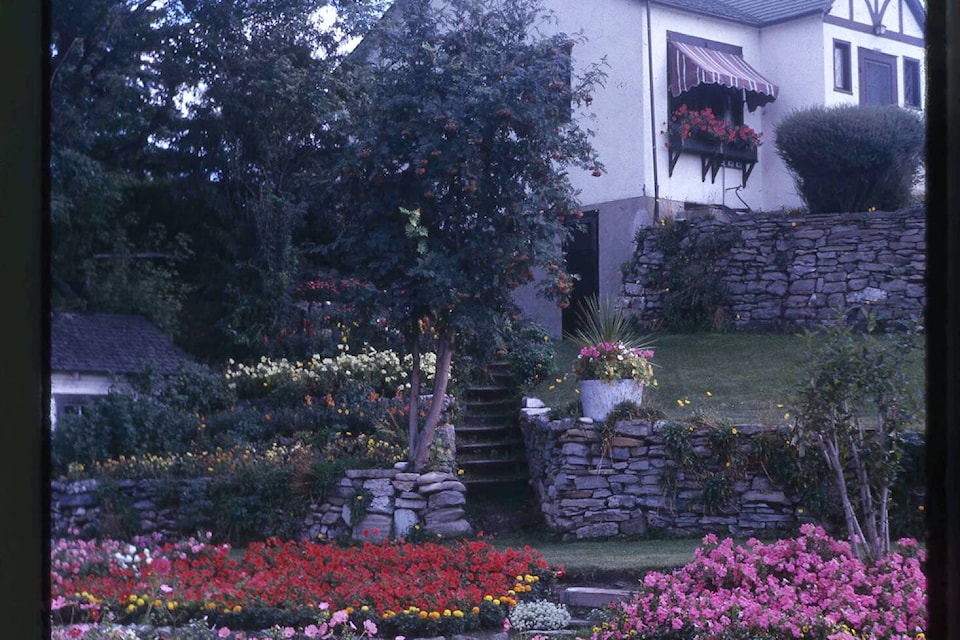Red Deer has long been considered one of the most attractive cities in Alberta. It has an outstanding parks system and many beautiful gardens and landscaped grounds. While the City has tremendous natural attributes, its current beauty is also the result of many decades of hard work by dedicated horticulturalists and gardeners. One of the most prominent of those horticulturalists and gardeners was Dr. Harold Snell.
Harold Snell was born in August 1886 in Torquay, England. In the fall of 1906, he immigrated to Canada and lived for a brief while with his brothers Charles and Herbert on homesteads west of Eckville.
However, Harold soon decided that homestead life was not for him. He moved into Red Deer and got a job with H.H. Humber Jewelers. In 1907, he decided to start his own jewelry and optical business in a small building on Ross Street.
In August 1907, Harold married Mabel Gibbings, whom he had known in Torquay. They were to have two children, Dennis and Peggy.
Harold became very active in community affairs. He joined the Board of Trade and served on the executive of the Red Deer Retail Merchants Association. He became the first secretary of the Red Deer and District Football (Soccer) League. In 1908, he donated the Snell Shield, which was the championship soccer trophy for Central Alberta for a great many years.
He also joined the Red Deer Horticultural Society shortly after it was formed in 1911. After he acquired a home on Addison (49A) Avenue, north of 55 Street, he proceeded to turn it into a real garden spot. He later constructed a sizeable greenhouse, complete with his initials, H.J.S., inscribed in tile in the floor. He also built a solarium onto his house so that he could enjoy his plants in the winter.
During the First World War, Dr. Snell enlisted and served overseas. In 1919, after the end of the War, he sold his jewelry business to A.B. Mitchell. The firm continues to this day as Mitchell and Jewell. Dr. Snell then went to Toronto where he took formal training as an optometrist, returning to Red Deer to practice that profession in 1921.
Dr. Snell became very active in the community again. He became a founding member of the Red Deer Rotary Club. He served on the Town Planning Commission. He was elected to City Council in 1924 and served as mayor from 1927 to 1930.
He also remained an avid gardener. He acquired the land on the south side of the traffic bridge, east of Gaetz Avenue. The old river bank had been used as an informal dump for many years, but Dr. Snell terraced it and turned it into a magnificent rock garden. For a great many people, Dr. Snell’s gardens became the distinctive landmark as they entered the City from the north.
In 1942 Dr. Snell built a little garden house for his twin sister and brother-in-law, Lena and Peter Greenwood. Peter assisted Harold for many years in maintaining the gardens.
In 1951, Mr. Herb Kruithof moved into the little house and maintained Dr. Snell’s extensive gardens and greenhouse. Shortly thereafter, he also got a job with the City Parks Department, eventually becoming the head gardener. Mr. Kruithof was one of the key people who made City Hall Park into the magnificent beauty spot of which we are all so proud.
In the late 1950s, Dr. Snell’s many years of work with the Red Deer Horticultural Society and his landmark gardens received international recognition when he was made a life member of the Royal Horticultural Society, headquartered in London, England.
In the early 1960s, the City of Red Deer acquired Dr. Snell’s floral gardens, greenhouse and garden house. The City Parks Department continued to use the greenhouse for many years to raise flowers for the parks.
On August 6, 1969, the City formally dedicated the Harold Snell Floral Gardens as a city park. Fortunately, despite failing health, Dr. Snell was able to attend the dedication. He passed away in the fall of 1970.
Michael Dawe is a Red Deer historian and his column appears on Wednesdays.
